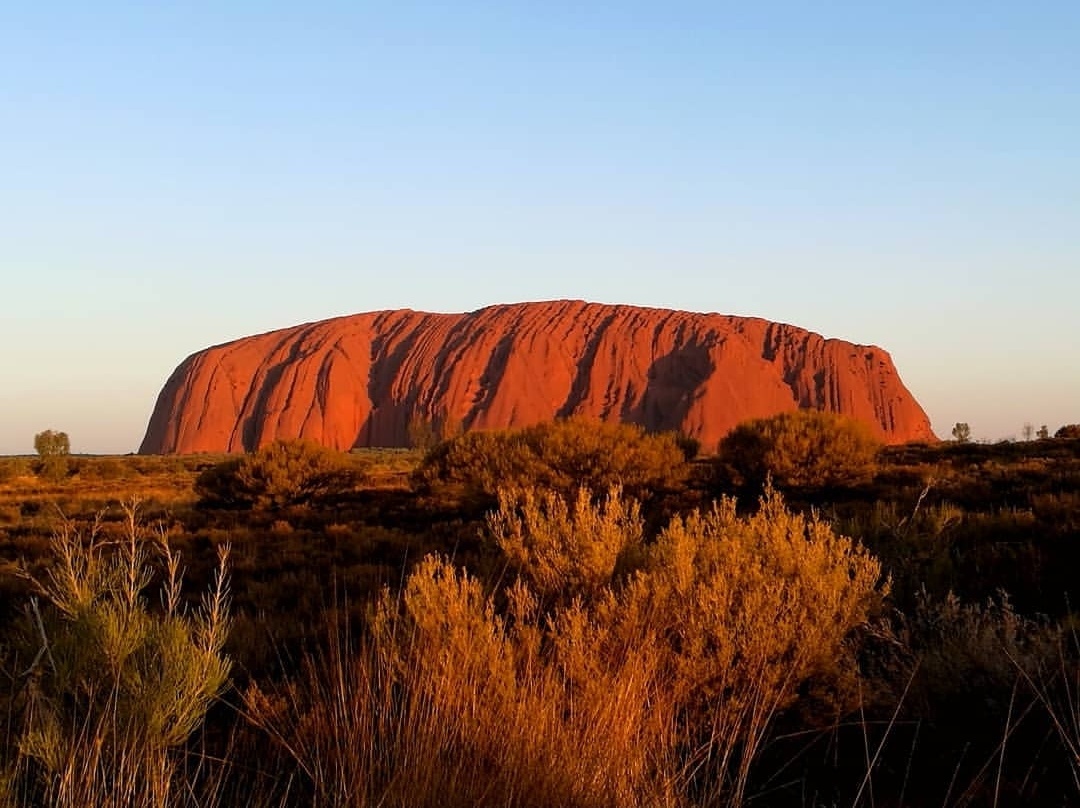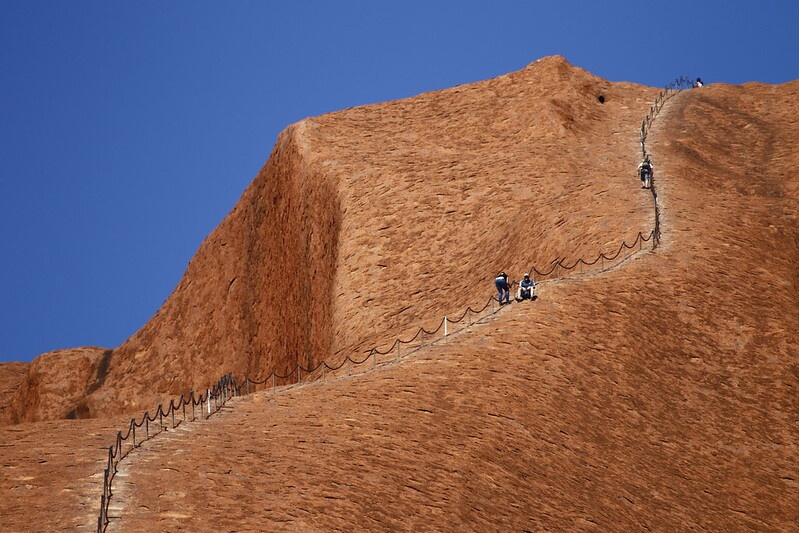
Image credit: @martycerry_
Uluru, also known as Ayers Rock, has been closed for climbing as of 26 Oct 2019. Sacred to the indigenous people of Australia, its closure is also to honour and respect the Anangu people and their traditions.
Safety and sanitary reasons also cited for closure
The tourists’ activities have resulted in littering, illegal camping and human waste polluting the water sources.
In addition, as many as 37 tourists have died in their attempt to climb Uluru due to reasons like dehydration, accidents and other health-related factors. The rock itself is tricky to ascend; there are no clear steps and there is only a single metal chain to help tourists climb the rock.
With temperatures reaching 47°C in the summer and strong winds at a height of 348m, it is undoubtedly a hazardous undertaking. For safety precautions, Uluru is closed whenever the temperatures surpass 36°C and after 8 am in the summers.

Image credit: Ed Dunens
Cultural significance of Uluru
While some stories cannot be told to outsiders, the aborigines are more than willing to share their culture and stories with visitors.
According to their beliefs, ancestral beings first emerged from Uluru when the world was in its infancy, in order to create life. The acts of these ancestral beings are said to be evident in the physical features of the rock. The story of Lungkata is one such example. Lungkata is a blue-tongue lizard who steals meat from Emu. Emu gets so angry that he burns up the cave that Lungkata is sleeping in. Blinded by the smoke, Lungkata falls off the rock — his burnt body leaving a huge blue patch on Uluru.
In another legend, Kuniya is a python whose image can also be seen in the stone. In order to protect her nephew, she fought a venomous snake named Liru, and the marks of their battle are shown at a waterhole.
Indeed, Uluru’s hazardous path was to be climbed only for pilgrimage and spiritual reasons. Many Anangu people have called it their “church”.
Closure as a small step forward for aborigines rights
In 1979, Uluru was first recognized as an important landmark of the Anangu people who have lived there for 40,000 years. It took several more years for the land to be given back to them legally and in 2017, the Uluru-Kata Tjuta National Park board unanimously voted to end the climb.
This closure comes a year after the Australian government rejected a proposal for forming a body to represent indigenous peoples in parliament. To date, Australia is the only commonwealth country who has never signed a treaty with its natives.
While much more can be done to aid and support the indigenous community, the closure is a small win and has given them needed peace.
Also read: Dive into the Depths of Australia’s Northern Territory: 7 Hidden Gems Waiting to be Uncovered!





